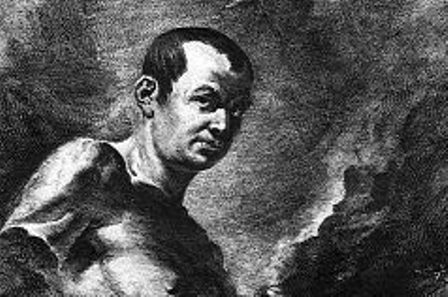
WTI Magazine #58 2015 April, 17
Author : Giovanni Verde Translation by:
The extraordinary artistic talent of Giovanni Battista Piranesi has often been underestimated in Italy. The Venetian artist was involved in a series of works of great value and author of an original review of the Italian artistic past, condensed in the grandeur of the Roman Empire.
Piranesi was born in Mogliano Veneto on October 4, 1720, the son of a Venetian stonemason. He starts early in his career as an architect, specializing in hydraulic works and responsible of the maintenance of the Venetian Lagoon.
In 1756 Piranesi begins to study a huge amount of Roman buildings, up to publishing four books about the monuments in Rome, where he glorifies the greatness of the Roman past. In 1761 he is admitted to the Academy of San Luca in Rome, and in the same year he decides to open his own printing house in the city.
His big opportunity comes in 1763, when Pope Clement XIII entrusts him with the task of the restoration of St. John Lateran, the oldest church in the West, and the most important church in the Catholic World. Unfortunately the lack of funds will not make possible the realization of his projects. But in the following year Piranesi is rewarded for the disappointment of his failed projects: Cardinal Giovanni Battista Rezzonico commissions him the renovation of St. Mary's Priory and the annexed Villa of the Priory of Malta in Rome.
Headquarters of the Sovereign Order of the Knights of Malta, the villa is one of the most famous examples of eighteenth-century Roman architecture, appreciated all over the world, famous for the latch of his door access, from which you can see, in perspective, two sovereign states: the Aventine, then Italy; and the dome of St. Peter's Basilica, in the State of Vatican City.
This is the only architectural work done by Piranesi. In front of the main entrance of the villa, the artist creates an extraordinary eighteenth-century square, original example in Rome Rococo urban setting, decorated with trophies of war that allude to the campaigns of Knights of Malta, and with the coats of arms of Rezzonico, on which the entrance door opens.
The ideal center of the villa is the church of Santa Maria del Priorat, located within the garden, restored by Piranesi through stucco and engravings of extraordinary elegance. The iconographic project, made with great care in sophistication, repeats everywhere - from the square outside the church to the furnishings of the garden - symbolic elements like the snake, the ship, the cross, and then weapons and military emblems alluding to the military history of the Order. The small church outside evokes the architectural model of a Roman temple, while the interior decoration complements the baroque fantasy with classic elements spread everywhere, starting from the tomb to Piranesi himself, who died on November 9, 1778: the monument will be created in 1780 by the sculptor Angelini.
The great art of Piranesi, made of majesty and continuous outbursts towards the past Empire, draws from Roman ruins a new and nostalgic feeling for an ideal world, now lost and corroded. From this point of view, Giovanni Battista Piranesi will be considered from the middle of the '700 on as a precursor of that powerful idealist spirit that will incite the Italian Romanticism in '800.



